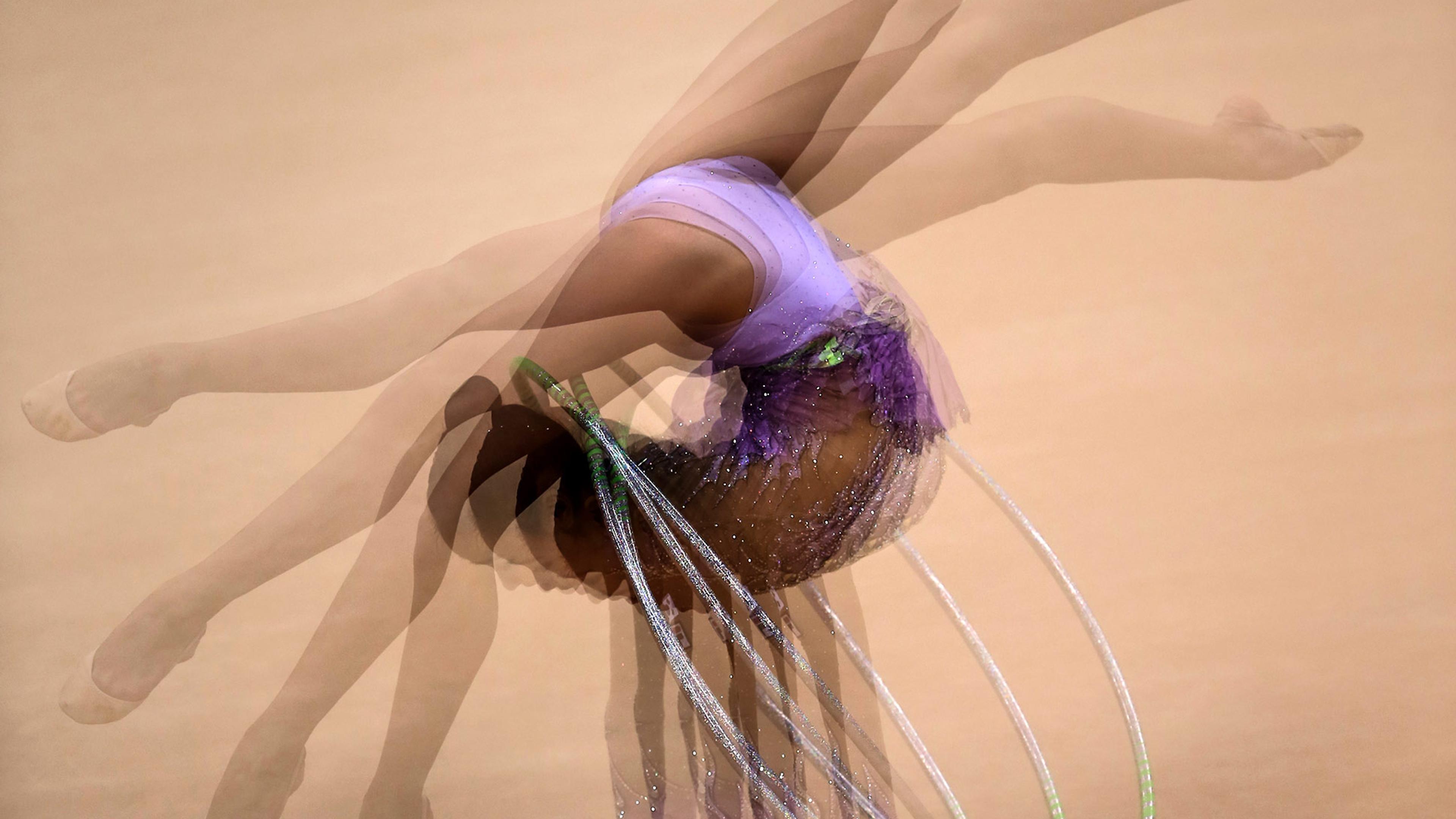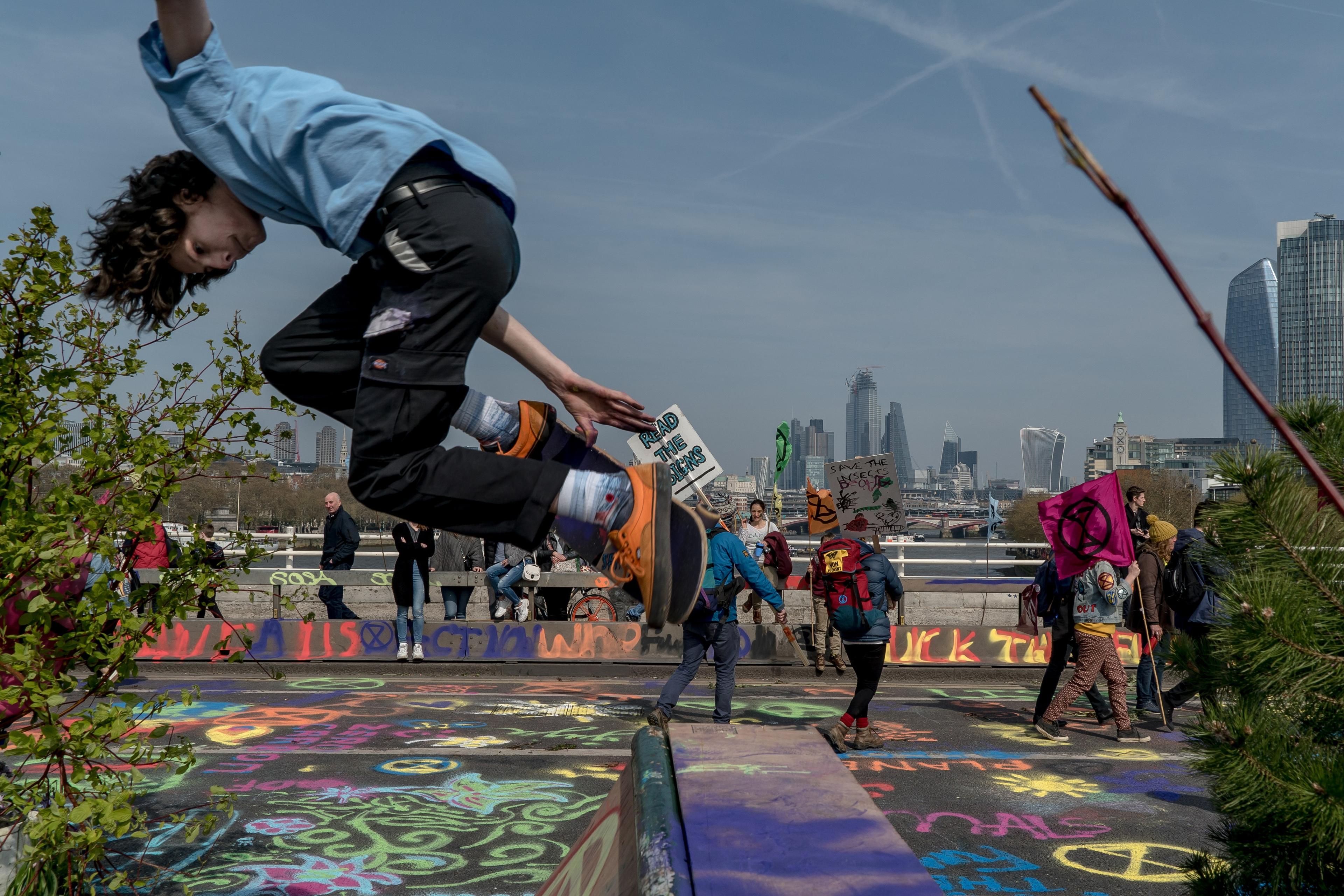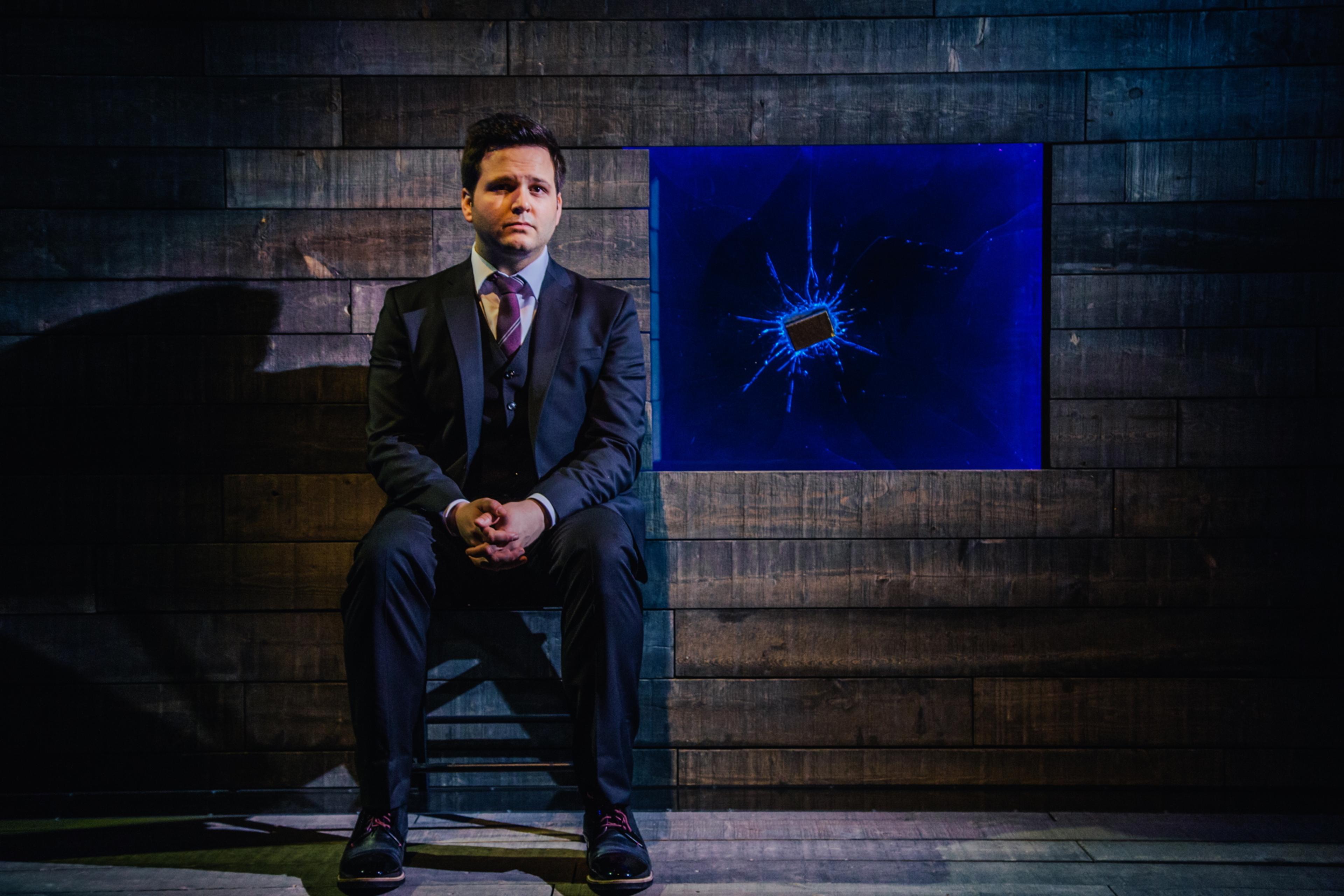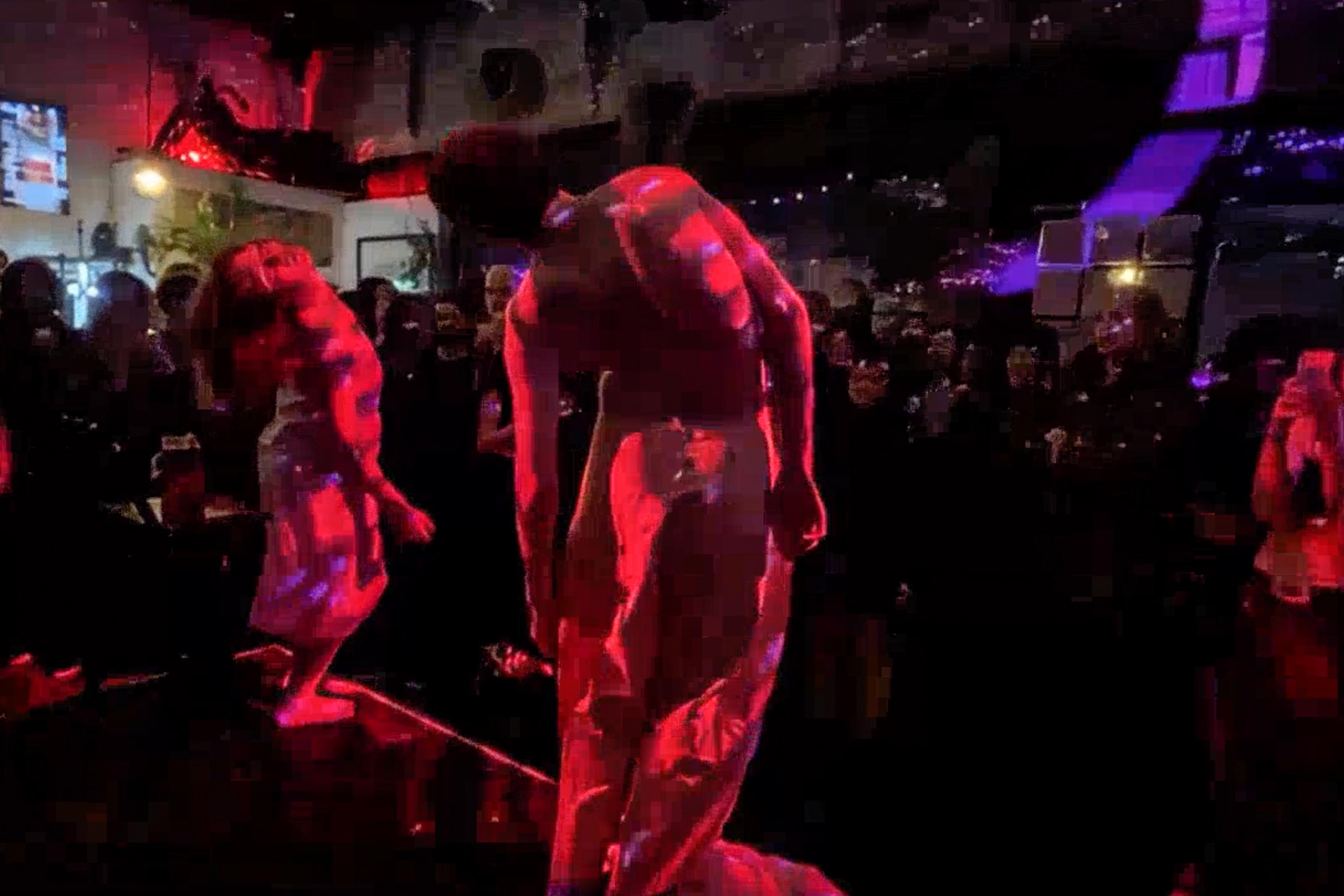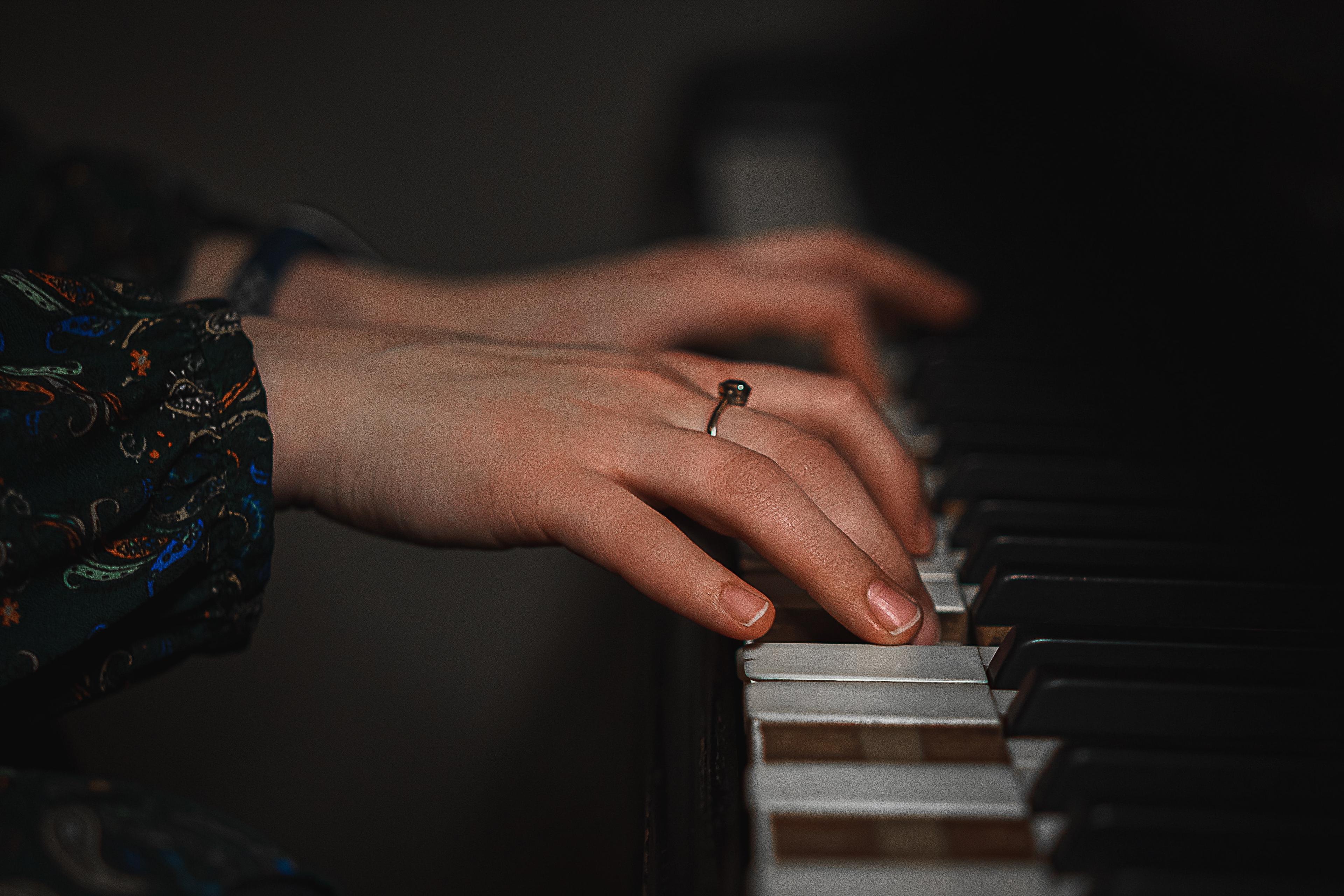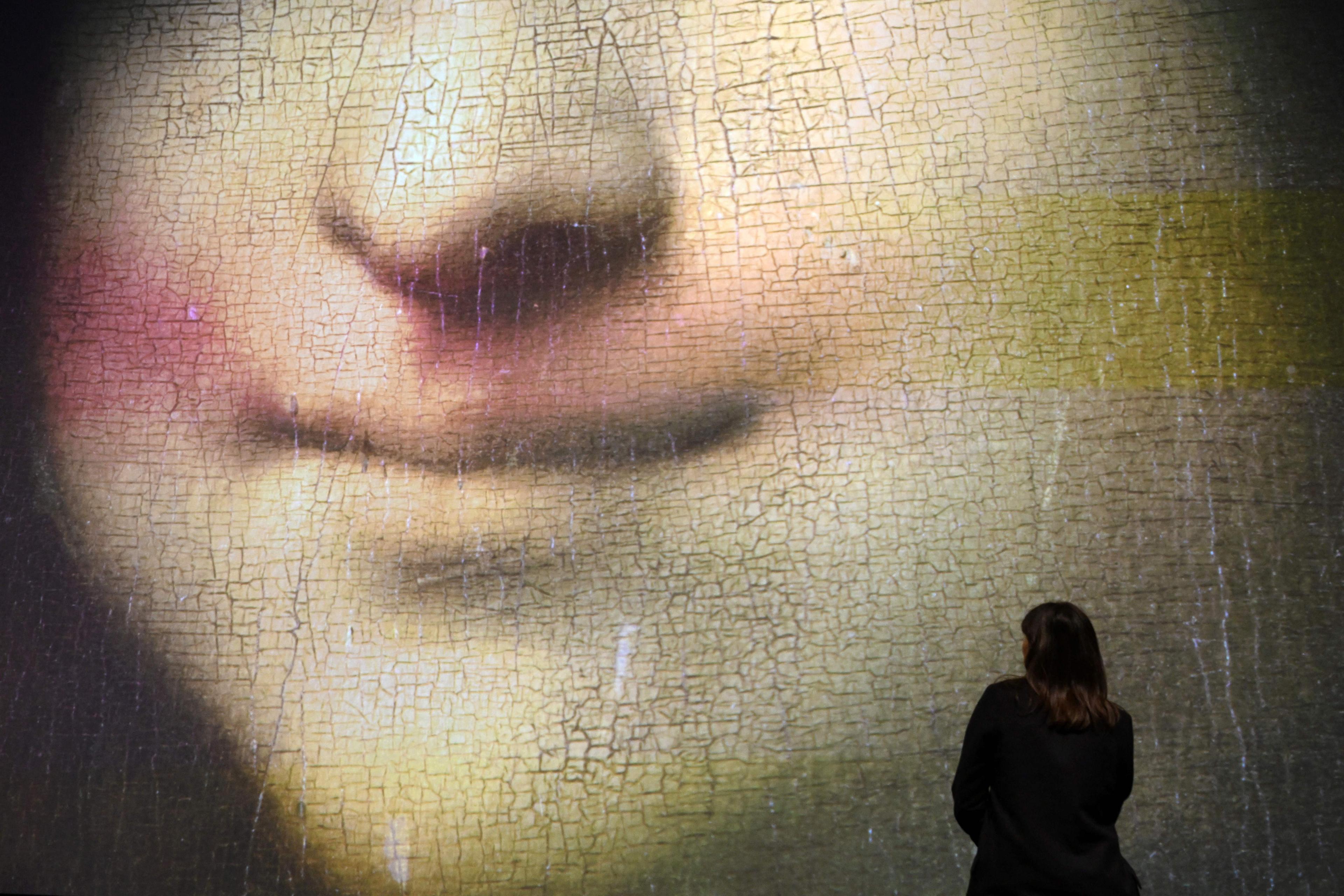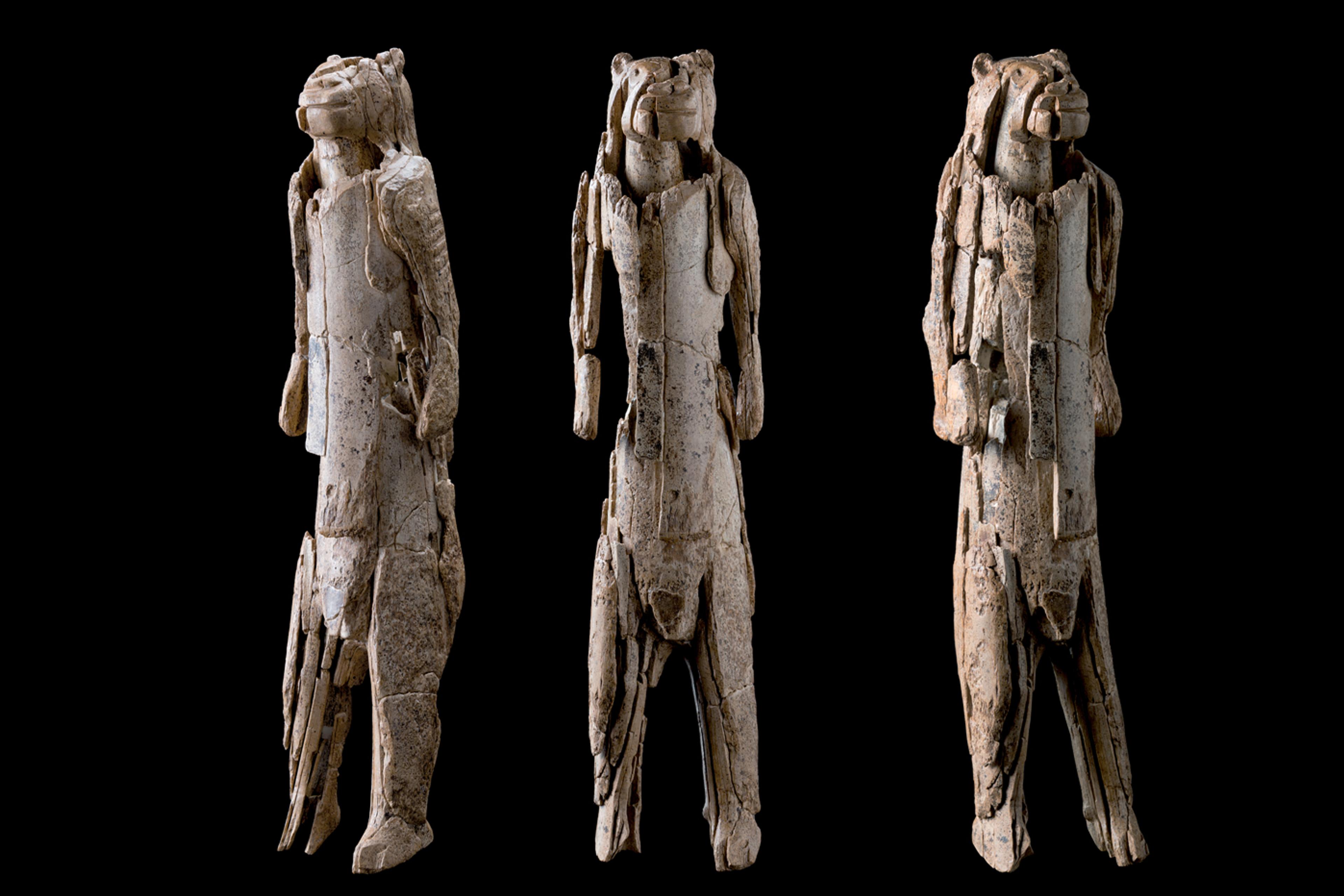Last year I set out to teach myself a new hula hoop trick. I had never seen or heard of this one before. In the trick, I am in a handstand and manipulate the hoop with my legs so that it twists around my body in a continuous motion. The project had all the elements of problem solving: a well-defined goal, different strategies for reaching that goal, and a feedback loop between attempts and strategies. Still, the experience was different from cracking logic puzzles, crafting arguments or other activities typically thought of as problem solving. In this case, my body was not just a hat rack for my mind but an active part of the thinking process.
The idea of hooping as problem solving might sound pompous. It is often thought that bodily skills, such as biking, tumbling and rope jumping are mindless, unintelligent routines. Sure, it might take thinking and strategising to learn these skills. But the experts’ movements are like flipping on a switch: once consciously initiated, the bodily skill follows effortlessly and automatically. Or so it seems.
The impression of mindlessness is especially alluring in the case of hooping. The hoop move that everyone knows, waist spinning, is simple and repetitive. Children learn it quickly. And for the novice it can be hard to imagine more dimensions to hula hooping than ‘How many hoops can you spin on your waist?’ Traditionally, circus artists have adapted to this one-dimensional view of what makes hooping hard and interesting – the idea that the more hoops involved, the harder the move. Knowing that the audience will be able to relate to and appreciate the trick, hoopers often finish their acts by spinning a big stack of hoops – even if it is far from being the most difficult move in their repertoire.
In reality, there is much more to hooping than spinning one, two or a stack of hoops on the waist. Rhythmic gymnasts inspire a style where the hooper throws the apparatus up in the air and does acrobatic movements before catching the hoop in some difficult way. Hoop jugglers, by contrast, throw or roll a set of hoops in regular, continuous patterns. And hoop dancers create intricate dances where the hoop and the hooper move as one. Some artists spin and manipulate hoops while performing aerial acrobatics. None of these activities have the appearance of problem solving. Their bodily nature is deceptive.
Think about a movie telling the story of a talented problem-solver. Chances are you’ll end up thinking about a mathematician, not a sporting legend, let alone a circus artist. Movies about experts with bodily skills rarely portray their protagonists as geniuses. Rather, the focus is on how much tough, repetitive, boring work they can suffer through to make their bodies work like machines.
These portrayals notwithstanding, there are many similarities between the way mathematicians describe their work and the way achievements are unlocked in the circus. According to the mathematician Norbert Wiener writing in 1923, mathematicians need imagination to decide which questions are worth pursuing. Similarly, imagination leads a hooper to investigate promising bodily skills. A mathematician experiments with tentative hypotheses; a hooper, with potential routes to making a move work. A mathematician develops a habit of constantly looking for and correcting weaknesses in their reasoning. An expert hooper routinely polishes their skill from every angle: strength, mobility, coordination and so on. And like many mathematicians, Wiener argues that part of mathematics is making judgments of beauty and symmetry. Of course, performing hoop artists are continually thinking about aesthetics.
The crucial difference between mathematics and hooping is what needs to ‘work’: a string of logical steps or a sequence of movements. This might seem like a big difference. We have all spent time wracking our brains over mathematics problems. We recognise that the construction and validation of a mathematical argument takes a great deal of strategising. Can we say the same about the construction of a sequence of hooping movements? Yes, but to do so we must let go of musty old ideas about minds, bodies, and their relations.
As several pieces on embodied cognition in Psyche and Aeon testify, it is now widely thought that many processes that look purely mental are bodily in part – and vice versa. For instance, the neuroscientist Sarah Garfinkel argues that heartrate and other bodily signals guide our cognition. In addition, research suggests that motor skill experiences are connected to mental processes such as perception and language comprehension. For example, the neuroscientist Beatriz Calvo-Merino and colleagues found that when professional dancers view dance movements, their brain responses differ depending on whether the dancer has experience of performing the observed movements. ‘We understand actions not only by visual recognition, but also motorically,’ they concluded.
Working within the embodied cognition framework, many philosophers and scientists have started to challenge the idea that experts’ bodily movements are mindless routines. For one thing, as the philosopher Barbara Gail Montero argues in Thought in Action (2016), experts sometimes consciously monitor and think about some of their movements mid-performance, and this helps them perform better. For instance, when I kick to handstand and simultaneously start to spin two hula hoops – one in each foot – I focus on my right foot, since it must perform a more complex movement than my left foot. Monitoring and thinking about my foot’s movements helps me nail the trick.
More surprisingly though, skilled bodily action might be intelligent even when it does not involve verbalisable thought or conscious control. Consider a trick where the hooper throws the hoop in the air, kicks up to handstand, and catches the hoop with their legs while holding a handstand. This trick is fast-paced, and there is no time to consciously reflect on all or even one of the relevant variables – the height and distance of the throw, hand placement, timing of the kick to handstand, and so on. Might the sequence still involve flexible adjustments that contribute to the success of the trick?
Some theories of skill predict that, once a skilled hooper has consciously initiated the trick, their body executes a preplanned, fixed sequence of movements in a reflex-like manner. But according to the philosopher Ellen Fridland, such theories are not compatible with relevant empirical evidence. Studies suggest that when people successfully perform motor skills, the details of their movements are not fixed but rather vary from one performance to another. And if a change in the environment perturbs, say, a grasping action mid-performance, people adjust their movements in a way that matches their intended goal. Relying on such empirical evidence, Fridland argues that motor skills do not flow from a ‘general, preplanned trajectory but, rather, unfold in an intelligent way’. I believe that this is how fast-paced hoop tricks occur as well. My hands and my feet are always making adjustments that vary from one catch to the next. These adjustments are not part of an analytically formed plan, but they still help me catch the hoop.
Well-rehearsed circus skills are not mindless routines. But hoopers, and circus artists more generally, are rarely willing to stick to moves that they already know to be possible. Rather, they are continually innovating new tricks. Reflection and mental modelling are relevant in this context, but non-conceptual, bodily thinking might also play a role. When I was learning the handstand-hoop-twisting-move I mentioned in the beginning of this Idea, the combination of trials, errors and reflection in between was not enough for me to master it. I know this, because the skill stabilised before I had managed to formulate an analysis of the dynamics of the move. In fact, I had to watch several slow-motion videos of myself before I was able to verbalise and explain the mechanics of the trick to teach others how to do it. On the other hand, it seems highly unlikely that the rate of successful attempts increased by accident, without purposeful adjustments. The conclusion? My feet solved the problem faster than my reflective mind.
The mechanics of a trick are only one example of the kinds of problems hoopers approach through their bodies. Especially for hoop dancers, the focus tends to be on the aesthetics of the dance as a whole, not on the mechanics of a single trick. The process of developing a hoop dance likely varies from person to person. But here too the body might have underappreciated capacities. Montero argues that proprioception – the way we make sense of the movements of our own body parts through muscles, joints, skin and so forth – is an aesthetic sense. A dancer does not always need a mirror or a choreographer to assess the aesthetic quality of their movements. Rather, they sense through their body whether one movement is more graceful or exciting than another. Similarly, a skilled hoop dancer might sense proprioceptively how a hoop should be held and manipulated to create the effect of angularity, smoothness or weightlessness.
Hula hoopers set themselves challenging aims. They employ intelligent bodily and nonbodily strategies to achieve those aims. In brief, they are problem-solvers. What does that mean for how we should value hooping? Nothing, one might suggest, because the measure of a skill is how useful its outputs are. On this line of thinking, mathematical skill commands respect solely because it serves technological innovation and scientific discovery. But that cannot be the whole story. As a teenager, I attached newspaper stories about famous mathematicians on the wall and devoured their biographies. I did not understand their work and could not judge its real-life usefulness. Rather, I admired their perseverance and ability to grapple with challenging puzzles. Likewise, one can admire a circus artist’s perseverance and problem-solving skills in and of themselves.
What about the usefulness of hooping? It does not help steer the economic system or allow us to understand the Universe. But when expertly executed, hula hooping does bring joy to people watching a circus show. When I see the hooping discoveries that my colleagues make – from hoop juggling and rolling, to hula hooping on the trapeze – I feel awe. These discoveries expand my view of what is humanly possible like a great science article expands my view of how the world works. And, based on conversations with other hoopers, I know that the humble hoop is a source of strength and self-confidence to many.
